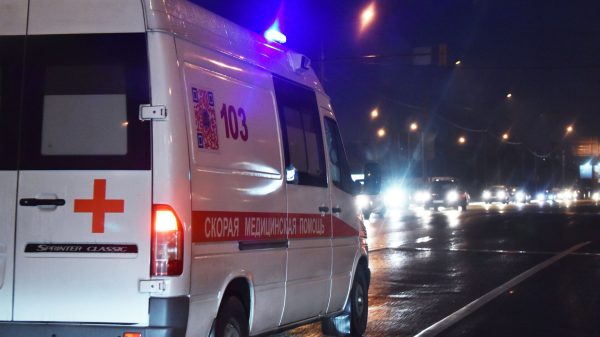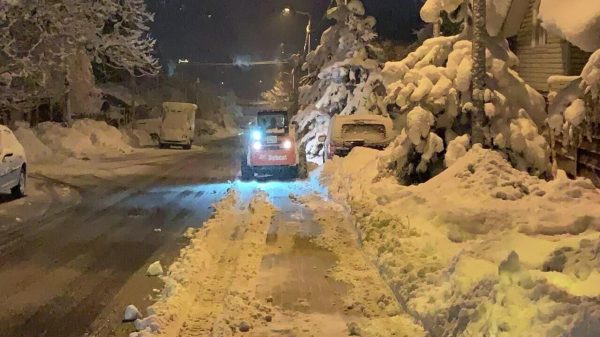Sign up for the Guardian’s Fight to Vote newsletter
Voting during a contentious presidential election and a pandemic is more than a little overwhelming. Like many Americans, you may have designed a plan to vote by absentee ballot months ago, when 3 November felt a lifetime away, and no one knew how election day would look. Maybe you were unsure of where you would be, geographically speaking, and voting by mail felt like the safest option. If you’re like me, when the time came to request your absentee ballot, you submitted your information and waited for the ballot to arrive in the mail, but it never did.
I requested my absentee ballot for New York on 14 September. Two weeks later, the status on my ballot tracker read “out for delivery” but no ballot ever arrived. One of my roommates requested her Pennsylvania absentee ballot on 5 October and it has reportedly been on the way since 19 October. Last week, the Queer Eye star and Texas resident Jonathan Van Ness shared on Instagram that his absentee ballot was marked out for delivery weeks before but never arrived, and the election board couldn’t locate it.
Why hasn’t my absentee ballot arrived if I requested it before the deadline?
As states grapple with the challenges of voting during a pandemic, people across the country may find themselves without an absentee ballot days before the election for a multitude of reasons. An absentee ballot request form “may be marked invalid if it’s not completed according to the specific instructions or if it was submitted by the postmarked date, but not received by the deadline”, says Carolyn DeWitt, president and executive director of Rock the Vote. To make matters worse, “if a voter submitted an absentee request that was deemed invalid, they may not receive notification, in which case a voter may be waiting for a ballot that will never arrive”.
Does mail-in voting lead to fraud – and does it help Democrats? The facts
Read more
Another one of my roommates believed she had properly requested her California absentee ballot online, only to learn that she needed to physically submit an absentee ballot request to her local board of elections as well. Meanwhile, the US Postal Service has been struggling to meet the demands of increased absentee ballots amid delayed services this year.
Did states have enough resources and time to set up voting by mail?
In short, the answer is no. While five states have conducted elections by mail for years, including Oregon and Colorado, the rest were forced to adapt in a matter of months. “It takes most states several years to transition to a vote-by-mail state, but the pressures and restrictions of Covid-19 have put significant pressure on election officials while the federal government has failed to provide adequate resources,” says DeWitt. “There are logistical hurdles – from the purchasing, printing and mailing of millions of absentee request forms and absentee ballots to the processing and counting of absentee ballots.”
Congress has granted $400m in election aid to states but the Brennan Center for Justice estimated $4bn would be needed to create “free, fair, safe, and secure” elections across the country. Donald Trump has also admitted to restricting funds for the USPS in hopes of curbing mail-in voting. With the entity responsible for delivering absentee ballots under-resourced, ballots may remain in processing or lost through election day.
What is the best way to track my absentee ballot’s status?
If you requested an absentee ballot but have yet to receive it, you can track it online or by calling and emailing your local election official, says Ben Hovland, chairman of the US Election Assistance Commission. It may be possible to visit your local election office and speak with a representative, depending on your jurisdiction.
How do I vote if my absentee ballot is lost?
In the case that your ballot isn’t located, you have a few options. First, check if an absentee ballot can be picked up from your local election office. If so, you or a trusted person may be able to grab and drop it off in a ballot dropbox or at your local election office quickly.
The more obvious choice – voting in person – is also an option but comes with a few hoops to jump through. “Most states will require the voter to complete a standard affidavit or another form of documentation confirming that they never received the ballot. Then, the voter will be allowed to vote in-person,” says DeWitt. These affidavits are available at polling places and would be submitted with your in-person vote. “In some cases, voters may have to complete a provisional ballot that will be counted once it’s been verified that the voter did not already vote.” This is the case in states such as New Jersey, Alabama, Texas and California.
Provisional ballots are a safeguard to ensure people only vote once, explains Hovland. They are theoretically counted as long as you don’t submit a completed absentee ballot, but there’s no guarantee. The 2018 Election Administration and Voting survey reported that about 38% of provisional ballots were rejected in the 2018 election. Reasons for this included a voter not being registered in that jurisdiction, having the wrong ID, and having already voted. Canceling your absentee ballot before voting, as Van Ness reported doing, may allow you to vote in person.
If your only option is voting in person, but the idea of doing so during a pandemic is frightening, there are a few precautions you can take, says Hovland. If possible, avoid peak voting times before and after work, as well as lunchtime. Check to see if early voting is happening in your district, and keep in mind that the polling location may be different than your voting place on election day. Some jurisdictions also provide voters with the ability to check wait times in advance of leaving to vote.
What if my absentee ballot comes at the last minute?
While the USPS advises against mailing your ballot later than a week before the election, if your ballot shows up between now and election day, you can still use it. Some states, such as Michigan and New York, allow you to drop it off in person or invalidate it at the polling station and cast your vote there. In certain places, such as Florida, voters may be able to have their ballots delivered by someone else, says DeWitt. Some jurisdictions may provide ballot pick-up for disabled voters.
To find out more about your state’s rules and practices for absentee ballots, visit the below resources:
-
Vote.org breaks down absentee ballot rules by state
-
The ACLU outlines voter deadlines and laws




















































Свежие комментарии